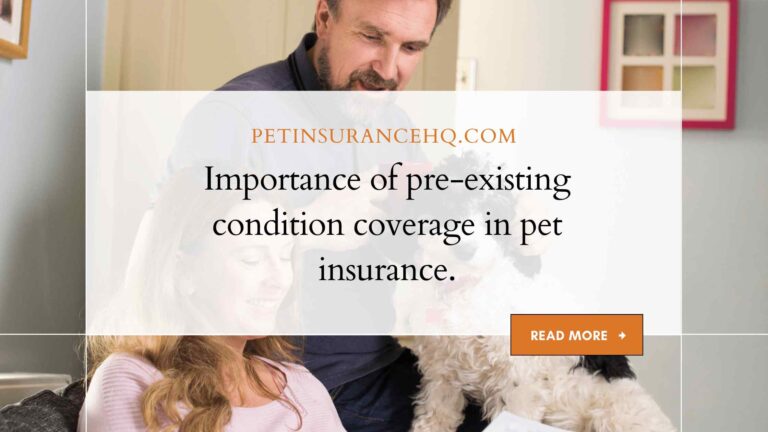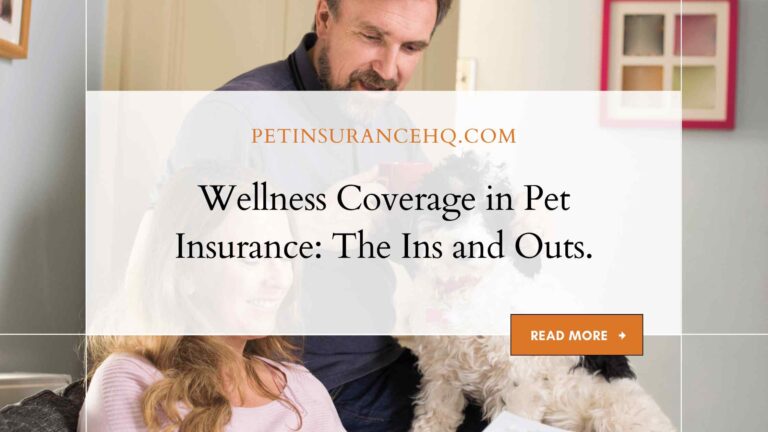The Role of Waiting Periods in Pet Insurance Policies
As a pet parent, you know that unexpected illnesses and accidents can happen at any time. That’s why pet insurance policies are becoming increasingly popular among responsible pet owners. However, many of these policies come with waiting periods before the coverage kicks in. These waiting periods can be frustrating for some, but they play an essential role in ensuring your furry friend is protected when they need it most.
In this blog post, we’ll dive into the purpose of waiting periods in pet insurance policies and provide helpful tips on how to navigate them effectively – all so you can have peace of mind knowing your beloved companion is covered when you need it most!
What is a Waiting Period?

A waiting period is the length of time that must pass before your pet insurance policy becomes effective. This period is usually between 14 and 30 days, but may be longer for some policies. During the waiting period, you will not be covered for any medical expenses incurred by your pet.
Additionally, the waiting period is when some insurance companies will assess whether they want to accept or reject your application. If you are accepted, you can start taking advantage of your policy’s coverage at the end of the waiting period.
How Does it Work With Pet Insurance?
With pet insurance, you pay a monthly premium, and in exchange, the insurer will reimburse you for eligible vet bills when your pet gets sick or injured. Most policies have a waiting period of 14 days, which means that you won’t be covered for any illnesses that your pet develops within the first two weeks after you enroll. This waiting period is designed to protect insurers from people who enroll their pets only after they get sick or injured.
When you submit a claim for pet insurance, the insurer will review the documentation from your vet and reimburse you for eligible bills. Your coverage limits, deductibles, and copayment amounts will determine how much you receive back from the insurer. Keep in mind that some policies don’t cover certain conditions or treatments. Be sure to read your policy documents carefully so you know what is covered and not covered.
Overall, pet insurance can provide peace of mind for pet owners by helping offset the cost of veterinary care. Many insurers even offer additional benefits such as preventive care plans and prescription coverage that can make health care more affordable for pets.
The Pros and Cons of Having a Waiting Period
There are a few pros and cons to having a waiting period before your pet insurance policy kicks in. On the plus side, it helps to weed out any pre-existing conditions that your pet may have. That way, you won’t have to pay for coverage on something that is already an issue. It also protects the insurance company from people who buy a policy and then immediately take their pet to the vet for treatment.
On the downside, waiting periods can be frustrating if your pet has an accident or gets sick and you need to start using the insurance right away. It’s important to read the fine print on your policy so you know how long the waiting period is and what exactly is covered during that time. Some policies have a grace period where they will cover certain accidents or illnesses even if they occur within the first 30 days of the policy, so it’s worth checking to see if your insurer offers this type of protection.
In conclusion, the pros and cons of having a waiting period on your pet insurance policy depend on what you’re covered for and when you are expecting to need it. If you plan on enrolling in a policy and needing it immediately, then this may not be the best option for you. However, if pre-existing conditions are an issue or you want to make sure that no one is taking advantage of the insurance provider, then it can be an effective way to protect both parties.
What Kinds of Situations Can Be Covered Under a Waiting Period?
There are a number of different situations that can be covered under a waiting period, depending on the policy. Some common examples include:
- Injuries: If your pet is injured, the waiting period will typically begin from the date of the accident or injury.
- Illnesses: For illnesses, the waiting period generally starts from the date of diagnosis.
- Pregnancy: Pregnancy is often covered under a waiting period, with coverage starting from the date of birth or whelping.
Some policies may also have additional waiting periods for specific conditions, such as cruciate ligament rupture or hip dysplasia. It’s important to read the fine print of your policy to see what’s included and what isn’t.
Finally, some policies may also apply a waiting period in the case of pre-existing conditions. In these cases, coverage will typically begin from the date of enrollment or the first month of coverage after enrollment.
Tips for Choosing the Right Waiver for Your Pet Insurance Policy
When it comes to pet insurance, one of the most important aspects to consider is the waiting period. This is the amount of time that must pass before your coverage kicks in, and it can have a big impact on both the cost and the effectiveness of your policy. Here are a few tips to help you choose the right waiting period for your pet insurance policy:
- Consider your pet’s health history: If your pet has a history of health problems, you may want to choose a shorter waiting period so that you can get coverage for these issues as soon as possible.
- Think about your budget: Shorter waiting periods will typically mean higher premiums, so be sure to factor this into your budget when making your decision.
- Chat with your vet: Your veterinarian can give you some insight into what kind of health problems are common in your pet’s breed or type, which can help you make an informed decision about your waiting period.
Ultimately, choosing the right waiting period for your pet insurance policy comes down to balancing factors like cost, coverage, and risk. By taking the time to understand all of these factors, you can ensure that you find a policy that provides the best protection for both you and your beloved pet.
Alternatives to Pet Insurance with Waiting Periods
One common way to avoid paying for a pet insurance policy with a waiting period is to create an emergency fund for your pet. This can be done by setting aside a certain amount of money each month into a savings account. That way, if your pet ever needs unexpected medical care, you will have the funds available to cover the costs.
Another option is to purchase a pet health insurance policy that does not have a waiting period. While these policies may cost more than those with waiting periods, they will provide coverage for your pet right away.
Finally, you could also self-insure your pet by setting aside money each month into a dedicated savings account. This approach takes more discipline and planning, but it could work well for you if you are comfortable with taking on more financial risk.
No matter which option you choose, it is important to make sure your pet has some form of coverage in place should they ever need medical treatment. This way, you can rest assured knowing that their health and wellbeing will be taken care of.
Conclusion
We’ve explored the role of waiting periods in pet insurance policies and discussed why they exist. Waiting periods are often built into these sorts of policies to protect companies against fraudulent claims, and make sure that policyholders have an adequate amount of time to familiarize themselves with their coverage. By understanding when a waiting period applies, you can be more prepared for any unexpected costs that may arise from the treatment or care your pet may require.







